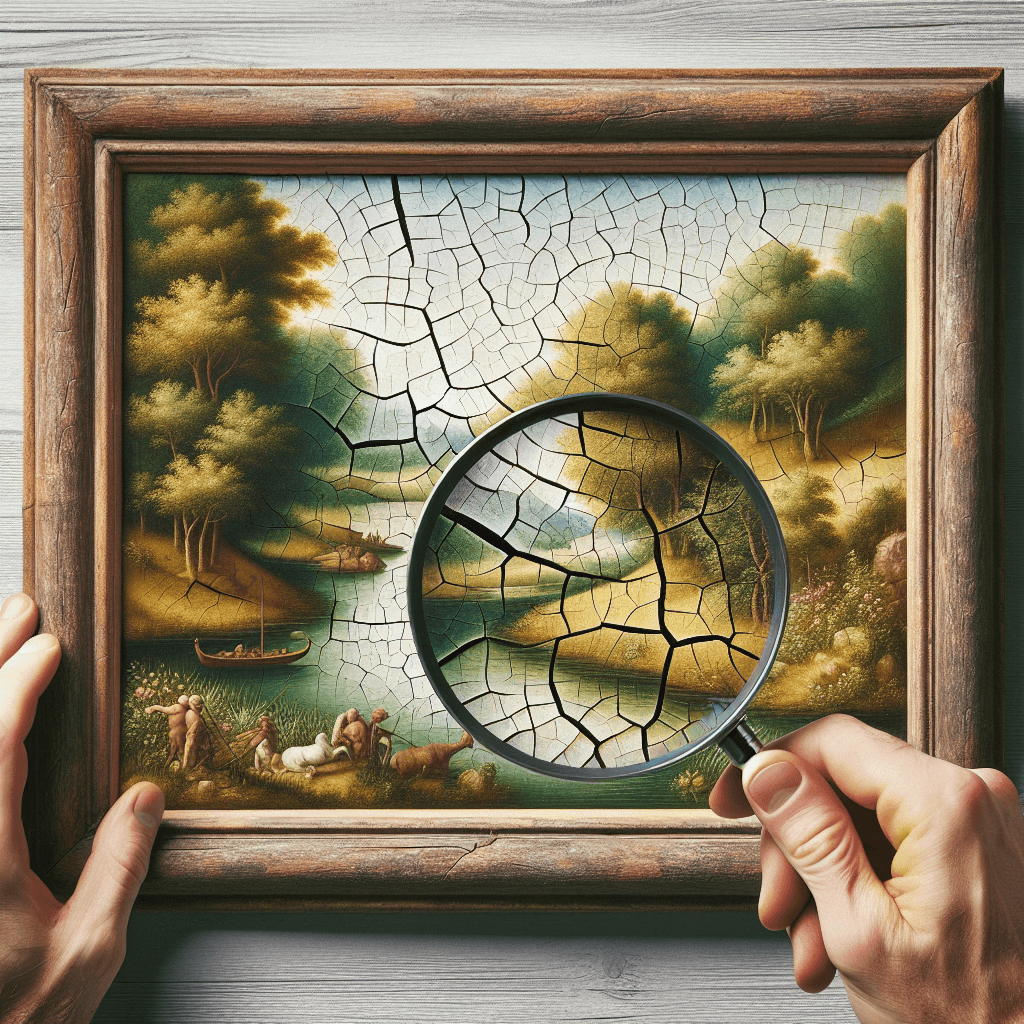Why do so many old paintings have a network of fine cracks all over their surface
That delicate web of cracks isn't a flaw to be lamented; it's the beautiful, inevitable signature that time itself leaves on a masterpiece.


Too Long; Didn't Read
TLDR: The cracks, called craquelure, are a natural sign of aging. They form because the layers of paint and the underlying canvas or wood expand and shrink at different rates over time due to changes in temperature and humidity, causing the brittle, aged paint to crack under the tension.
Unveiling the Craquelure: Why Do So Many Old Paintings Have a Network of Fine Cracks All Over Their Surface?
Have you ever stood before a masterpiece in a museum, leaned in close, and noticed a delicate, web-like pattern of cracks spread across the canvas? It’s a common sight on artworks from Rembrandt to da Vinci. Far from being simple damage, this intricate network is a natural and often revealing part of a painting's life. These cracks are a visual record of the painting's journey through time, a testament to the materials it’s made from and the environments it has endured. This post will explore the fascinating science behind these age lines, explaining what they are, why they form, and what they can tell us about a work of art.
Introducing Craquelure: The Art of Aging
That beautiful, spiderweb pattern of cracks has a name: craquelure (pronounced krak-loor). It is the term art historians and conservators use to describe the fine network of cracks that develops on the surface of aging paintings. It's crucial to distinguish craquelure from accidental damage like a tear in the canvas or a deep gouge. Craquelure is a natural, slow-forming phenomenon that results from the aging of the paint and varnish layers. While severe craquelure can eventually lead to paint flaking off, in most cases, it is a stable and inherent characteristic of an old painting—a wrinkle in time that adds to its character and authenticity.
The Science of Stress: Why Does Paint Crack?
Craquelure is essentially a sign of stress. A painting is not a single, uniform object but a complex structure of distinct layers: the support (canvas or wood panel), the ground (a preparatory layer), the paint itself, and finally, a layer of varnish. These layers all respond differently to their environment and age at different rates, creating tension that eventually results in cracking.
The primary causes can be broken down into a few key factors:
- Drying and Shrinking: The most significant cause is the drying process. Oil paint, the medium of choice for most Old Masters, doesn't "dry" by evaporation alone. It undergoes a slow chemical reaction called curing, where it hardens and becomes increasingly brittle over many decades. As the paint film and the ground layer beneath it shrink and lose their flexibility, they can no longer withstand the subtle movements of the support, and cracks begin to form.
- Environmental Fluctuations: Think of a painting like a living object that breathes with its surroundings. Changes in temperature and relative humidity cause the support material—especially wood panels and canvas—to expand and contract. The aged, brittle paint layer cannot stretch and shrink along with it. This constant push and pull creates immense stress on the surface, causing the paint to relieve the tension by cracking.
- Artist's Materials and Technique: The artist's own choices can influence how a painting ages. A thickly applied layer of paint (known as impasto) will develop different craquelure patterns than thin, translucent glazes. Furthermore, the use of certain pigments or drying agents in the paint mixture can make the final paint film more prone to cracking over time.
Reading the Cracks: A Detective's Tool
Far from being a mere imperfection, craquelure serves as a unique fingerprint for a painting, offering invaluable clues to art experts. The pattern, size, and shape of the cracks can reveal a surprising amount about the artwork's history.
Art conservators and historians can "read" the craquelure to help determine a painting's age and provenance. The cracks that form naturally over centuries are typically organic and varied. This makes them a powerful tool for authenticating artwork. Forgers often struggle to replicate genuine craquelure. Artificial aging methods, like baking a painting or applying solvents, tend to create cracks that are too uniform and regular, a tell-tale sign of a fake when examined by a trained eye. The pattern can even suggest where the painting was kept, as the type of craquelure on a wood panel can differ from that on a canvas, and each tells a story of its environmental journey.
Conclusion
The next time you visit an art gallery, take a moment to look closer at an old painting. Those fine cracks you see are not flaws but the graceful and inevitable marks of age. Craquelure is the physical manifestation of a painting’s history, born from the very materials the artist used and the world it has inhabited for centuries. It tells a story of chemical reactions, environmental changes, and the passage of time. These delicate networks are a reminder that art is not static; it is a dynamic object that lives, breathes, and ages, bearing the beautiful, intricate map of its own survival on its surface.
More Articles

Why do movie punches sound so much crunchier and louder than real ones?
That sickening, bone-crunching punch you hear in the movies is a lie, and the secret ingredient is probably sitting in your refrigerator right now.

What makes a beer bottle suddenly foam over just from a light tap on top?
It’s not magic, it’s a shockwave; discover the explosive physics that turns a gentle tap on your beer bottle into an instant foamy geyser.

Why do police officers touch the back of a car during a traffic stop?
It’s not a random habit; that simple touch is a calculated, old-school tactic designed to leave a crucial and potentially life-saving piece of evidence behind.